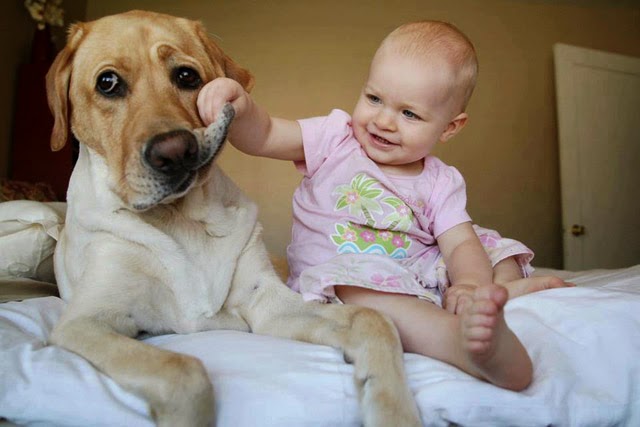The arrival of your new baby is an exciting, joyful moment! Life changes in lots of ways for everyone in the family. You’ve got a million things to think about, but there’s one thing you might not have considered – introducing the baby to the family dog.
Expectant parents who own dogs are often given 2 pieces of advice from well meaning friends and relatives, which are at best ineffective, and at worst, dangerous:
 MYTH #1
MYTH #1
“Bring home a doll and start treating it like a baby so the dog will get used to having a baby at home.” On the surface, this sounds like it makes sense, but there’s a huge problem with this piece of advice: a baby doll is not a baby. Dogs are hunters, with highly evolved senses. They can smell mates, prey and predators from miles away. They have eyes that can detect the slightest movements. They can hear the sound of a twig snapping deep in the woods. Their very survival depends upon these keen senses. Thinking that a baby doll smells, moves and sounds anything like a baby is ridiculous.
What does a baby doll smell like? It is usually made of vinyl and cloth and it smells a lot like a dog’s toys! Exactly the wrong association! You don’t want your dog thinking that the baby is a toy, do you?
 MYTH #2
MYTH #2
“A few days before baby comes home, bring a blanket home from the hospital with the baby’s smell on it.” The advice to bring home a blanket does absolutely NOTHING to prepare a dog for the arrival of an infant. Think about this: many dogs have been in fights with other dogs. Is that because they did not smell another dog before the fight began? Does smelling something teach the dog to feel good around something? The only thing that bringing home a blanket does is distract the family from what they should be doing in preparation:



